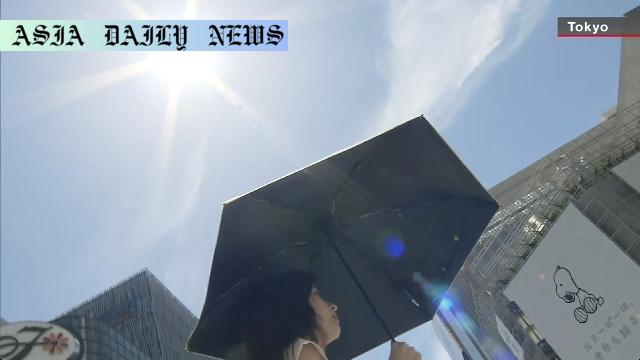Heatwave: Intense heat grips Japan as temperatures soar together with ongoing challenges in certain beach areas after past earthquakes.
Scorching heatwave engulfs Japan as the rainy season ends.
Daytime highs surge above 35°C in several cities, affecting locals and tourists.
Only one beach re-opened in Oku-Noto amidst earthquake aftermath cleanup.
Precautions include staying hydrated, using air conditioners, and avoiding prolonged outdoor activities.

Heatwave Conditions Embroil Japan
Japan is currently experiencing an oppressive heatwave, marking a dramatic end to the rainy season. Many areas across the nation have recorded sweltering temperatures, with the city of Yamagata in northeast Japan hitting a scorching 37.5 degrees Celsius on Saturday. Other key regions reported highs of over 35 degrees, underscoring the severity of the heat conditions gripping the country.
On a more positive note, residents of Noto town in Ishikawa Prefecture took a small but significant step toward normality as the Goshikigahama beach officially began its swimming season. This beach stands as the sole survivor in terms of accessible coastal relaxation in the Oku-Noto area after the region suffered a major earthquake on New Year’s Day last year. For locals, like one 24-year-old woman who expressed relieved happiness about the opening, this has become a rare opportunity to seek respite from the extreme heat amidst ongoing seismic safety checks for other beaches.
Impacts on Communities and Recreation
The heatwave has significantly affected daily lives and plans for leisure activities in Japan. Across northern to western areas, clear skies and high temperatures are forecasted to persist. For instance, Kumagaya City in Saitama Prefecture, Fukui City, and Toyooka City in Hyogo Prefecture might see highs of up to 37 degrees Celsius. This prolonged stretch of hot weather has spurred national advisories, urging citizens to take proper precautions during the daytime hours to stay safe. The reopening of Goshikigahama beach, while crucial for local recreation and morale, reflects a broader dynamic of recovery and adaptation to challenges posed by both natural disasters and climate extremes.
Staying Safe in Prolonged Heatwaves
Health experts and officials recommend several measures to combat the dangerous effects of prolonged heat exposure, particularly as many areas will face at least another week of high temperatures. These include staying hydrated by increasing fluid intake, replenishing key electrolytes through salt, staying in air-conditioned spaces when possible, and limiting outdoor activities during peak heat periods. Residents and tourists alike are encouraged to be vigilant, especially the elderly and those with preexisting health conditions, as they tend to be more susceptible to heat-related illnesses.
Japan’s sweltering heatwave stands as a stark reminder of the challenges posed by summer temperatures, amplified by climate change. It requires both individual responsibility and collective adaptation, particularly as people contend with its effects on daily life and long-term planning for safety and recovery efforts after significant natural events.



Commentary
Reflecting on Japan’s Heatwave
Japan’s current heatwave is not only a test of endurance for its residents but also a moment to reflect on broader challenges driven by climate and disaster recovery. The high temperatures, which showed dramatic spikes exceeding 35 degrees Celsius in several regions, make it imperative to consider both immediate precautions and long-term climate resilience strategies. Rapid temperature changes demand swift action, not just at an individual level, but also in terms of governance to ensure community safety and mobility.
The Role of Community Strength
While sweltering conditions are certainly challenging, the spirit of recovery showcased by locals in Noto town offers inspiration. The reopening of Goshikigahama beach, though it appears small in the larger scheme, represents a pivotal moment in rebuilding optimism and recreating public spaces. The region is still grappling with the aftermath of devastating earthquakes, and this move signals progress, even in the face of natural adversities. It highlights the importance of resilience and the dedication of locales to overcome not only climate issues but seismic challenges as they balance safety and activity.
Rising Temperatures and A Call for Action
This heatwave also serves as a reminder of the weighty implications of climate phenomena on daily life. From the risk of heat-related illnesses to the economic toll on energy consumption due to prolonged demand for cooling systems, the wave underscores the need for global strategies focused on countering climate extremes. Personal actions, community initiatives, and systemic infrastructure upgrades will collectively determine the future trajectory in effectively combating such climatic patterns.
The situation in Japan reflects how adversity, preparation, and adaptation often unite. For all its challenges, the heatwave is a call to action — urging both reactive measures for immediate safety and proactive innovations for a resilient future.